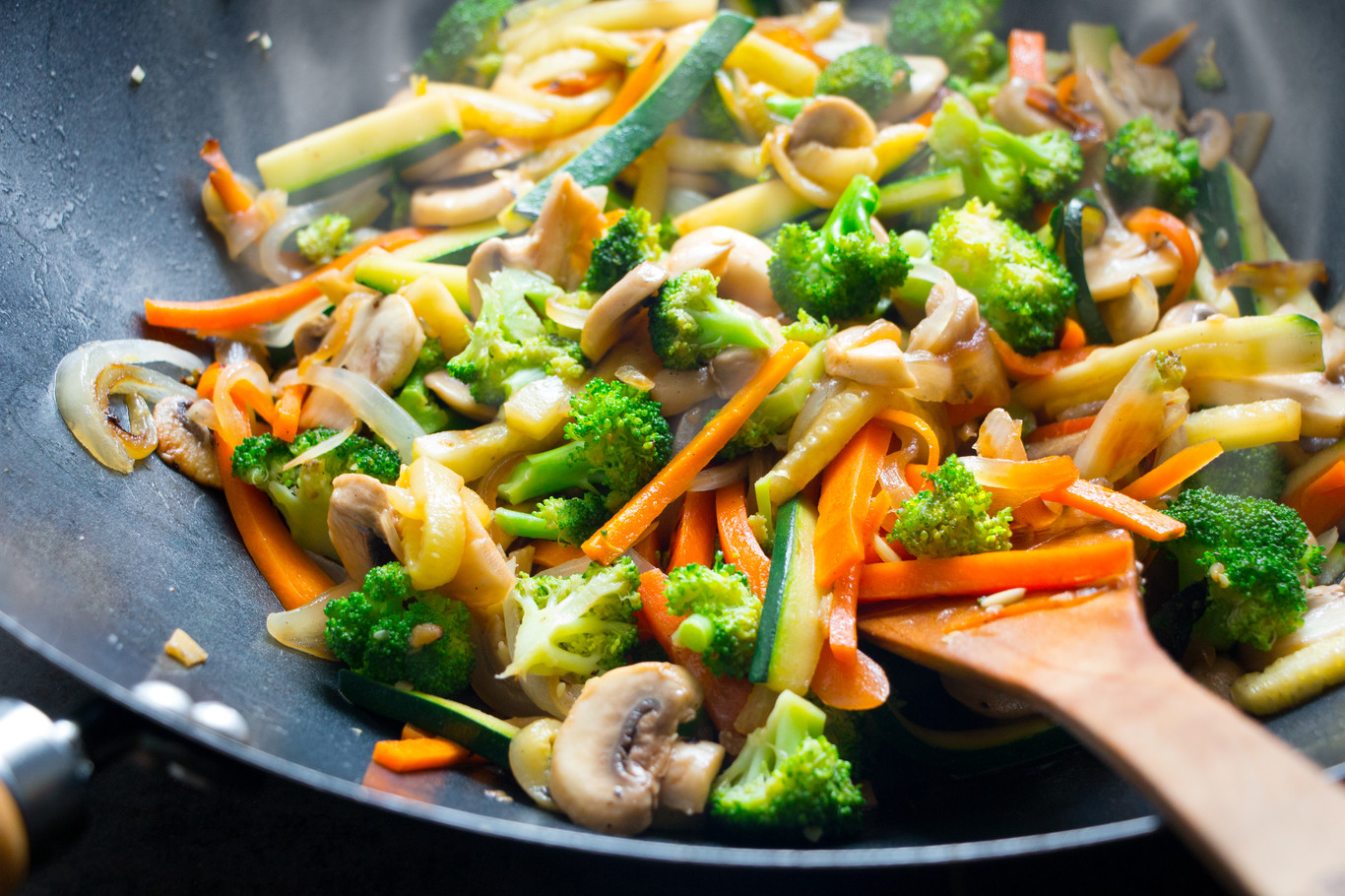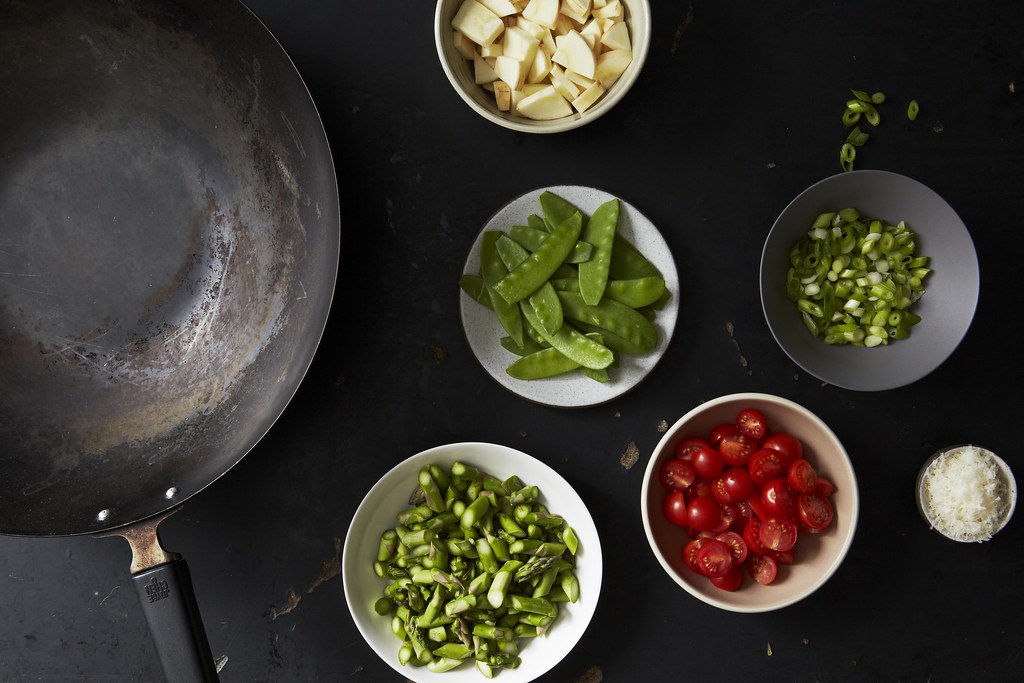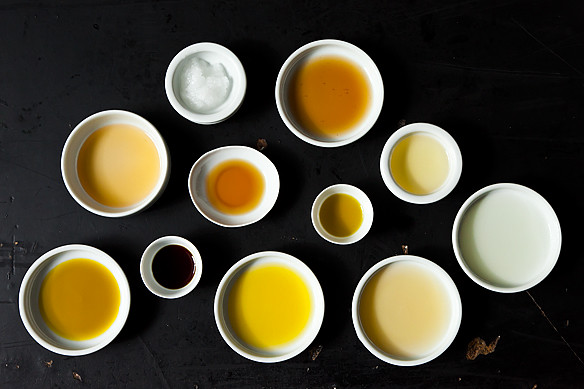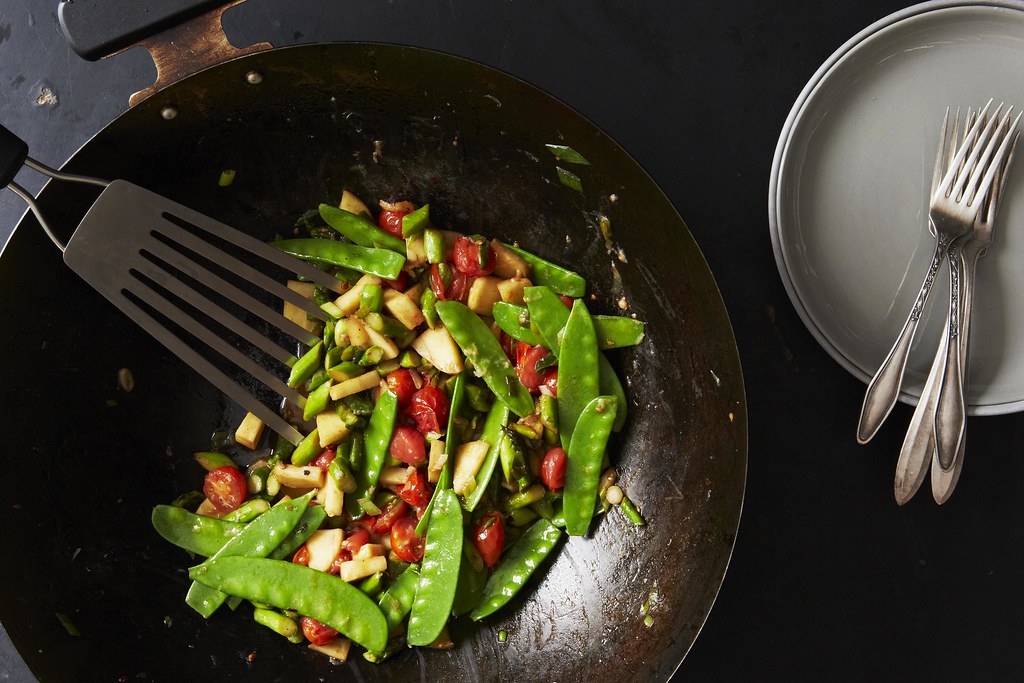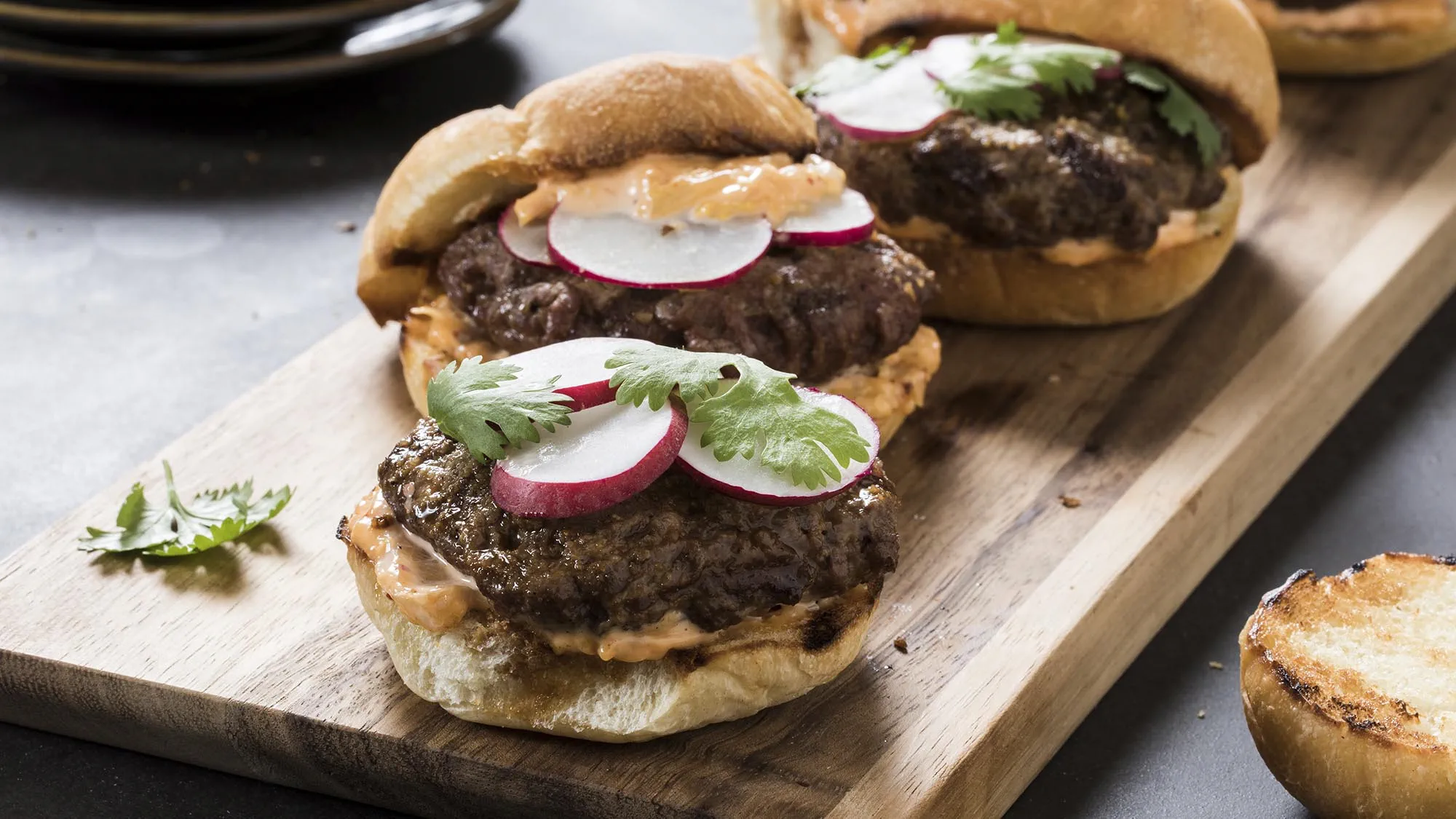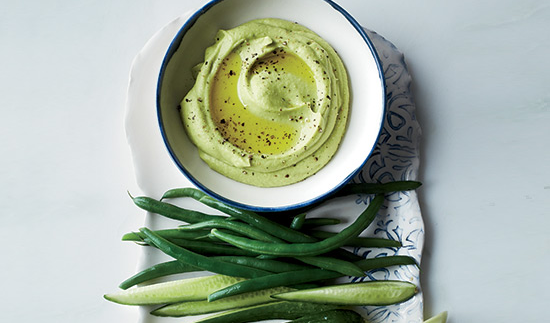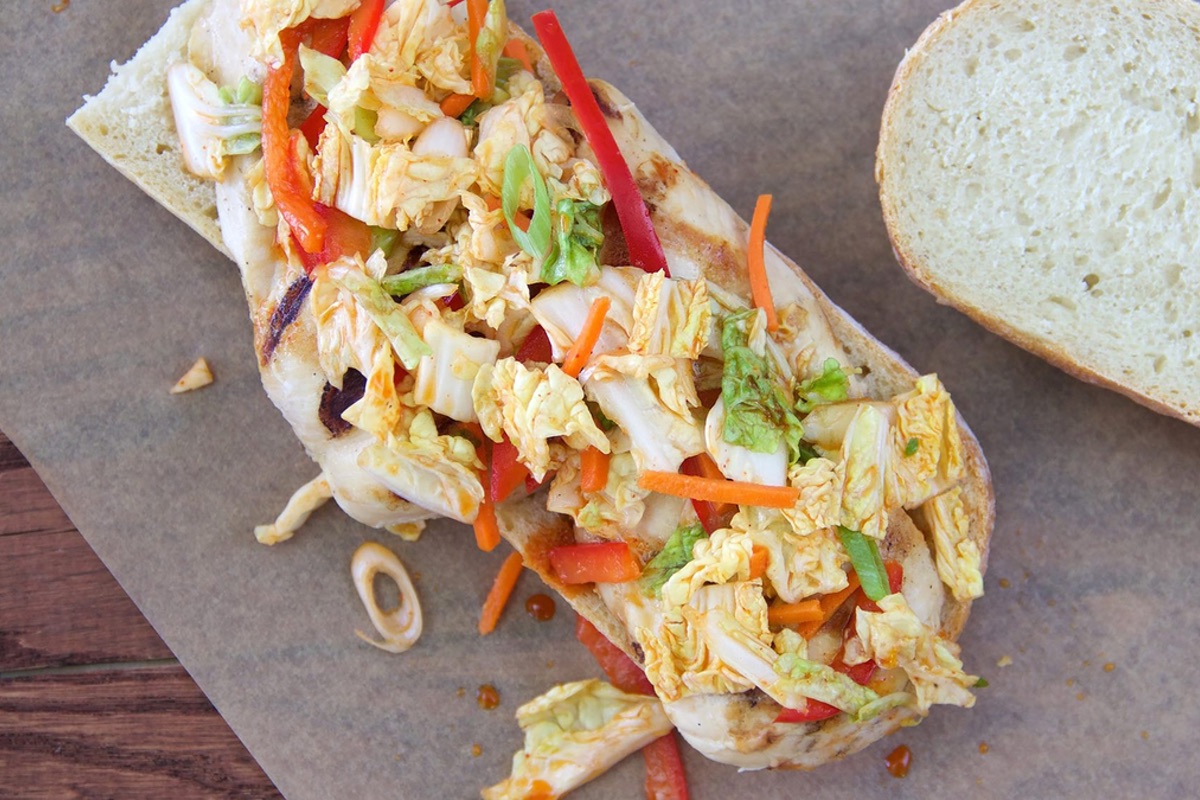A properly prepared stir-fry is a glorious dish -- with the quintessential balance of flavor, texture, and seared aroma. It’s a quick, healthful, and delicious way to eat more vegetables and less meat while using minimal fat. Here are a few essential tips to ensure the ultimate stir-fry:
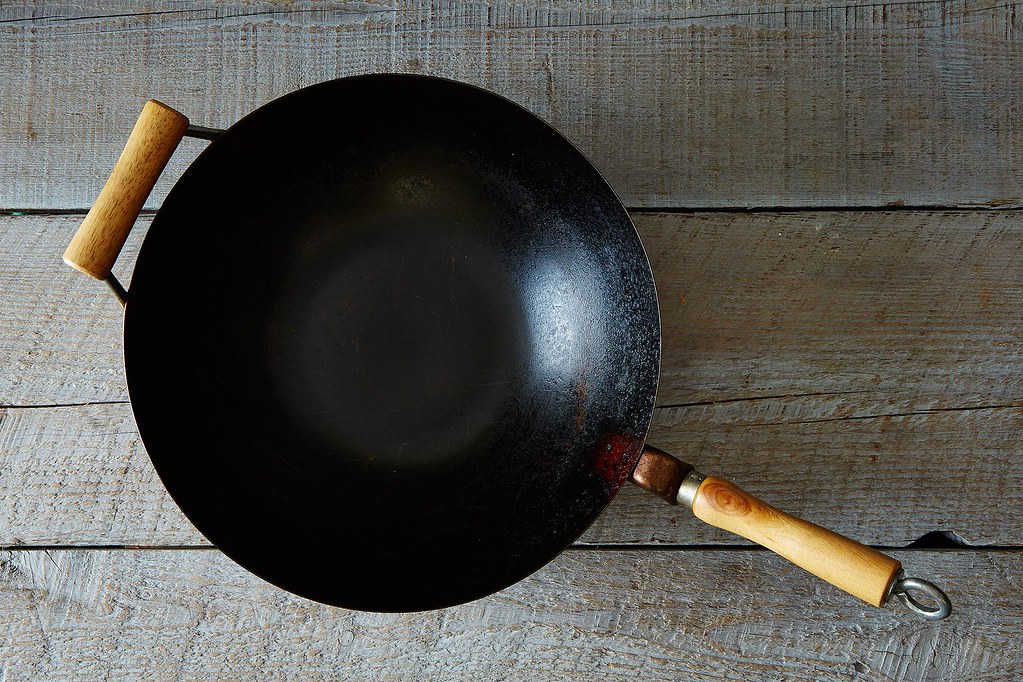
Picking the right wok:
There’s a reason you’ll never find a nonstick, anodized aluminum, or stainless-steel wok or skillet in a Chinese restaurant kitchen: Chefs use carbon-steel woks exclusively because these pans heat up fast and distribute the heat evenly. Chinese connoisseurs revere stir-fries cooked in a wok because they possess the coveted taste the Cantonese call "wok hei" or breath of the wok. The concave shape enables the cook to stir-fry ingredients with ease. With use, a carbon-steel wok develops a nonstick surface naturally over time, so minimal oil is needed. Remember, not all pans are created equal.
Round-bottomed or flat?
The best choice for the home kitchen is a 14-inch flat-bottomed, carbon-steel wok. The traditional wok has a round bottom, but it wasn’t designed for use on a modern stove. For cooking on a Western range, the flat-bottomed wok has the advantage of maintaining contact with the burner, so the pan can get hotter. My favorite is a sturdy, American-made wok sold at the WokShop.com. (You can use a round-bottomed wok if you're cooking on a semi-professional range with burners that have at least 18,000 BTUs of power; you'll just need a wok ring to stabilize the wok.)
Dry your vegetables:
Wet vegetables added to a wok cool down the pan, so you’ll end up with steamed rather than tender-crisp vegetables. Use a salad spinner or blot the vegetables with a kitchen towel until they’re dry to the touch.
Zen meditation of slicing:
Cut ingredients uniformly so that everything stir-fries in the same amount of time. If slices of chicken breast vary in size, for instance, by the time the thicker pieces are cooked, the thinner ones will be overcooked. Concentrate on slicing your ingredients as if it’s a meditation, and you’ll taste the difference.
Mastering the mise en place:
Prepare all your ingredients ahead of time and line them up near the stove in order of use. Once the stir-frying begins, there’s no time to mess around with last-minute prep; stir-frying requires your undivided attention. That means no texting or selfie action shots. Let a friend take the photos of you stir-frying!
Preheat the wok:
Preheating the wok prevents food from sticking. Heat the pan over high heat until a drop of water vaporizes within a second of contact. It's important to note that water in new woks sometimes just rolls around and doesn’t vaporize; in this case, when you swirl in the oil, a wisp of smoke is fine, but if the oil smokes wildly the moment it's added, you've overheated the wok and should begin again. Take the wok off the stove and let it cool down for five minutes. Pour oil out, wash the wok, dry, and start again.
Use oil with a high smoking point:
Choose an oil with a high smoking point -- such as peanut, grapeseed, or canola -- that can withstand the high temperatures required for stir-frying. Never use extra-virgin olive or sesame oil.
Avoid overfilling the wok:
Too large a volume of ingredients turns a stir-fry into a soggy braise. More than a pound of chicken, pork, or shrimp will not sear -- it will steam. Limit vegetables to about 4 to 5 cups. If it’s a leafy vegetable, though, you can use more because the leaves will collapse as soon as they hit the pan.
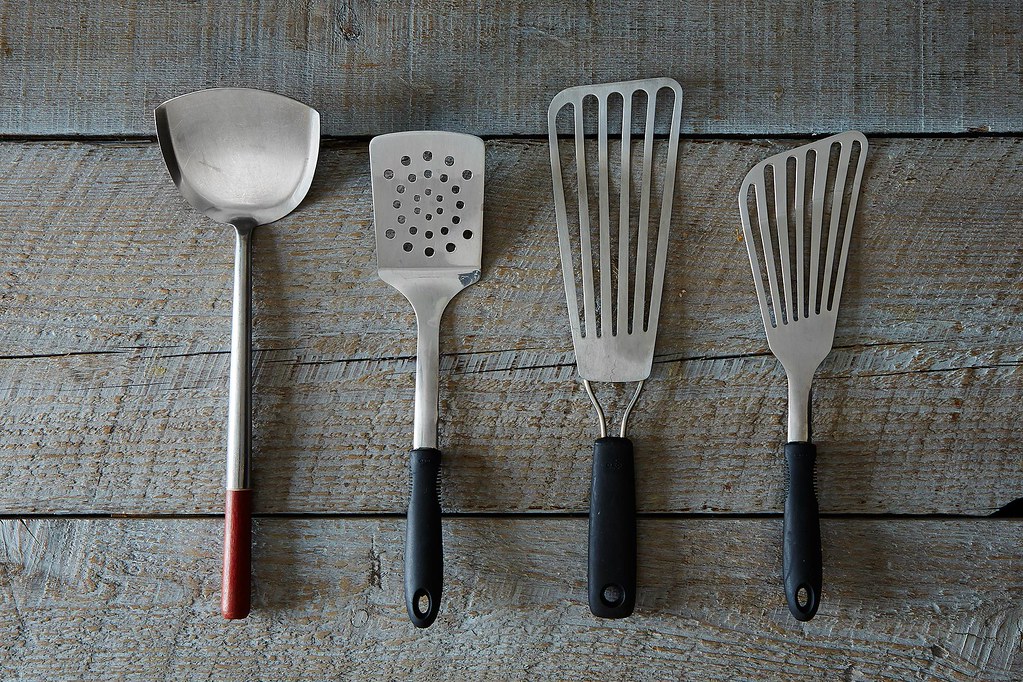
Stir fry with metal, not wood:
The best spatula is a Chinese spatula because it has a rounded edge that fits the curve of the wok and has a shovel-like shape that holds more food. Unfortunately, it's hard to find a good Chinese spatula, but a flexible, slotted metal spatula (a.k.a. fish or pancake spatula) is a great option. The thin metal edge gets under meat, rice, and noodles to prevent sticking.
Keep calm:
If at any time you feel things are getting out of control, turn off the heat and regroup. It’s natural to feel a little frazzled -- it’s all happening so fast! -- so take a deep breath, stay focused, and your confidence will grow with each stir-fry. Soon you’ll be a regular wokaholic.
Stir-fries aren’t just for Asian ingredients. Once you understand the technique, you’ll discover the remarkable versatility of stir-frying. With the start of spring, shop at your local farmers’ market and buy what’s in season. The high heat and speed of stir-frying accentuate the natural flavor and texture of freshly harvested vegetables. As the produce changes with the seasons, use zucchini in place of the asparagus or skip the sugar snaps and add snow peas or more cherry tomatoes. You can even play with the flavors with the addition of a few tablespoons of chopped dill, basil, or cilantro in the last minute of cooking.
Serves 4
1 tablespoon white wine or dry sherry
2 teaspoons soy sauce
2 tablespoons peanut oil, grapeseed, or canola oil
3 small garlic cloves, smashed
1/4 teaspoon red pepper flakes
2 cups asparagus, thinly sliced (1/4-inch thick)
1 cup parsnips, thinly sliced (1/4-inch thick)
3/4 teaspoon salt
1/4 teaspoon freshly ground pepper
1 cup sugar snap peas, strings removed
1/2 cup cherry tomatoes, halved
1/2 cup thinly sliced scallions
3 tablespoons grated Parmesan cheese
See the full recipe (and save it and print it) here.
This article was written by Grace Young from Food52 and was legally licensed through the NewsCred publisher network. Please direct all licensing questions to legal@newscred.com.


